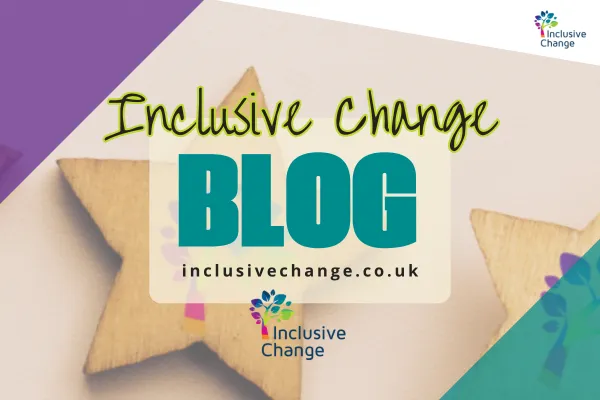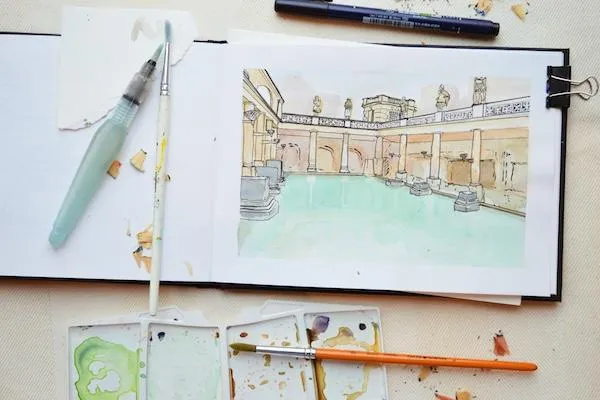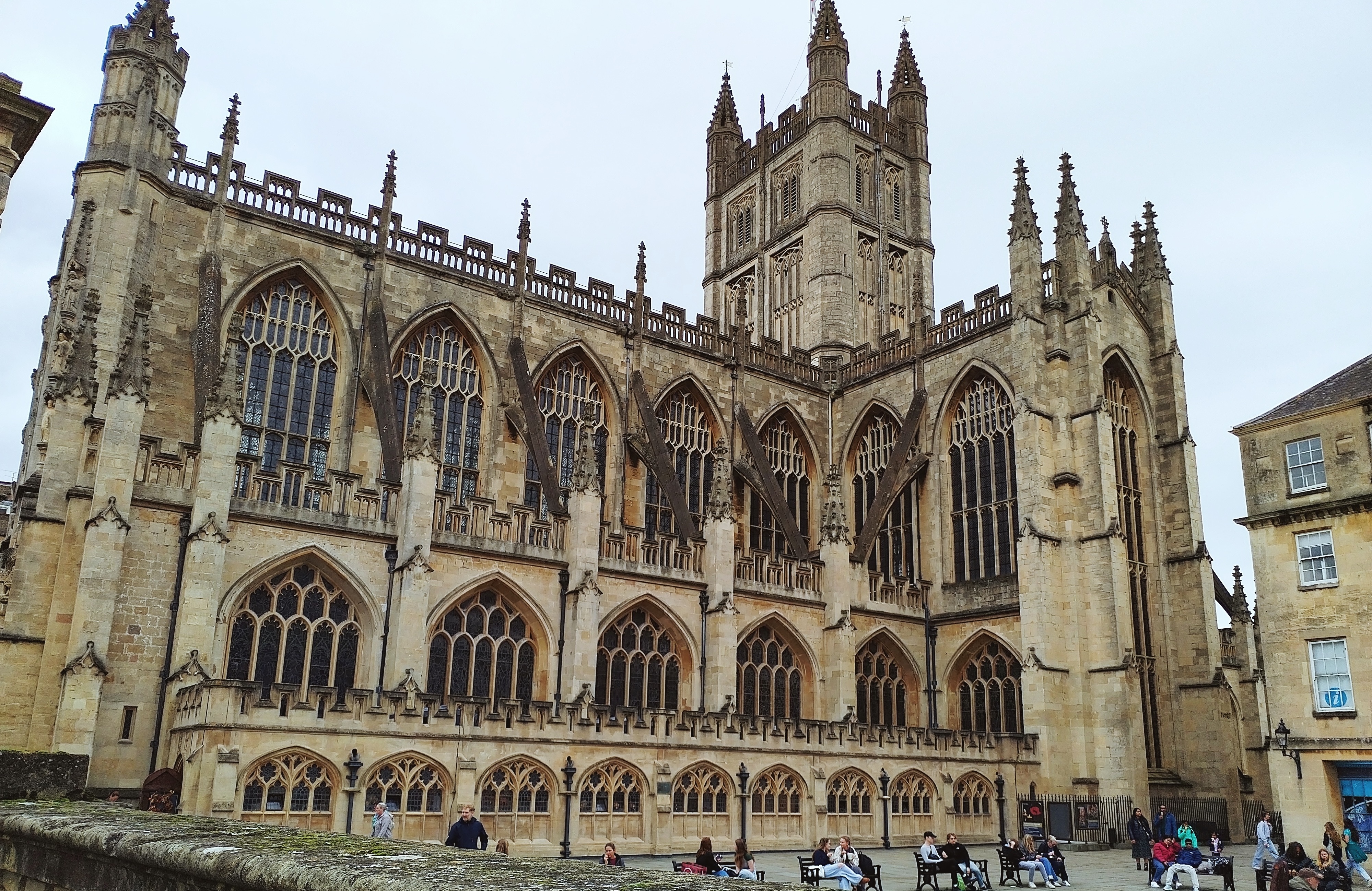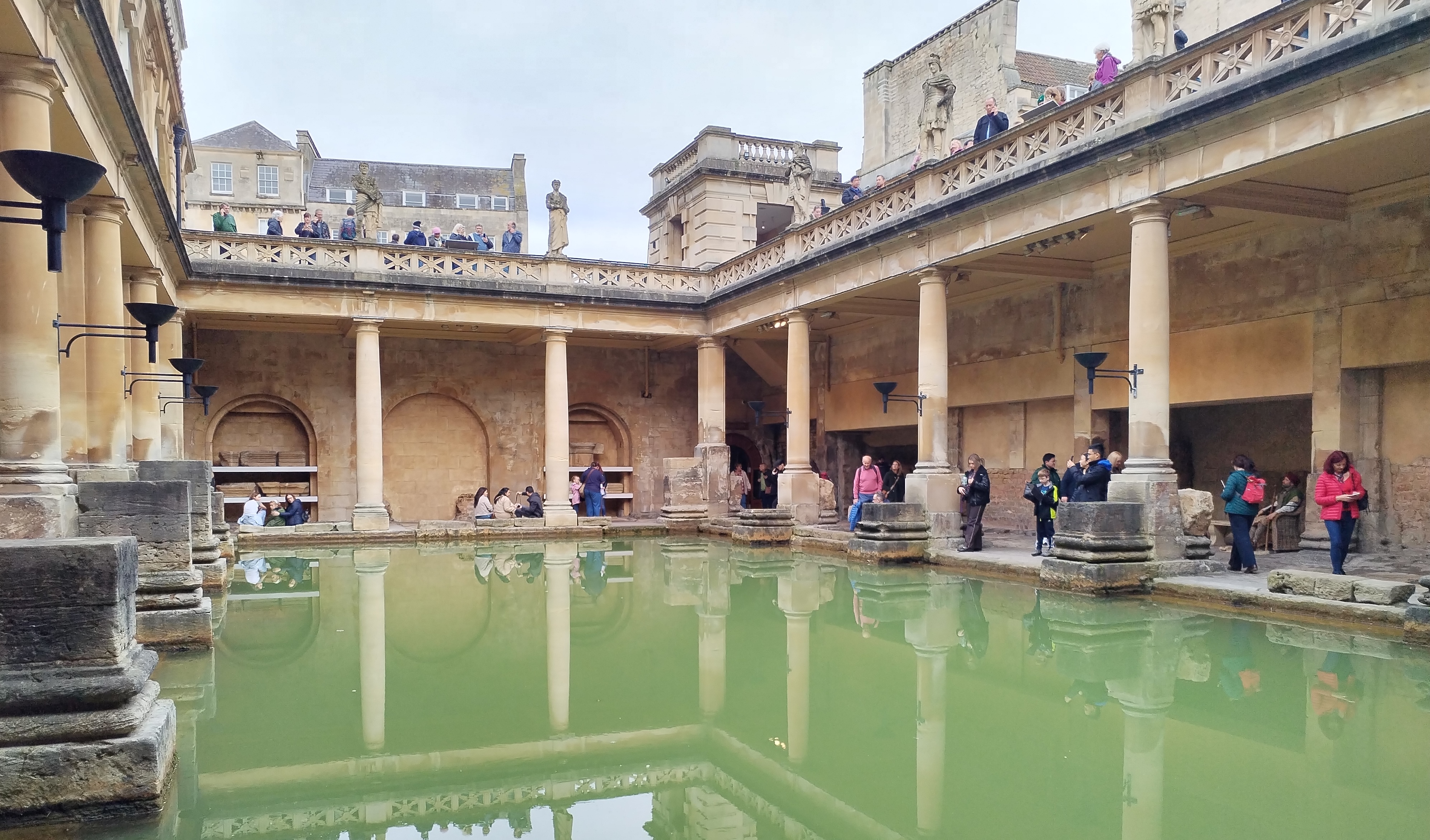Inclusive Change
Start the conversation
Read our blogs and discover more about neurodiversity through our links


A Day and a Half in Bath || Learning to Travel Alone with Autism
Upon finishing school this summer, I decided to take a gap year before moving onto higher education. Whilst this was partially done to give myself a break, I largely made this decision to work on building my own independence - particularly surrounding travel. You see, for many years I have battled with anxiety and agoraphobia. Growing up, I was so busy trying to recover my mental health that I was never able to truly build on my independence outside of the confines of my own home. On top of that, being autistic, my brain works differently to many other people: I regularly face overstimulation and potential meltdowns, I struggle with changes to my routine, I face executive function challenges, I don’t always understand common social cues.
All of these factors have inhibited my ability to travel and leave the house alone, but taking this year out, I am able to dedicate time and energy into overcoming these barriers; hopefully being able to work up to a long solo trip!
Previous to starting this blog, I have spent the last 2-3 years slowly chipping away at agoraphobia. Working with my previous speech and language therapist, we were able to identify my need to build my independence and began taking small steps: walking around the block, walking around a local nature reserve alone, walking to my local library and eventually, getting the bus to visit the cinema alone. I would repeat each step until I became comfortable with it before moving onto the next challenge. Whilst these may sound small and insignificant to many people, to someone who was unable to step out of the front door alone, this was hard work! Eventually, exposing myself to these situations has created a ‘snowball’ effect, making it quicker and easier to adapt to new challenges that I face.
I often like to follow a ‘stepladder’ design when exposing myself to new and challenging situations, in the hopes of working up to one large goal. With this framework you start with small tasks, but as you slowly move up the ladder, each task gets bigger and more difficult until you are left with your final goal. For many people, a level of reward is also useful after completing each level of the ladder: this could be anything from a movie night to a holiday!

A little illustration of the ‘stepladder’ approach to anxiety + exposure therapy that I use
To start on my ‘travel’ stepladder, I have been taking day-trips to local towns and cities that I am familiar with. But it’s time to take larger steps.
As I begin to embark on these bigger steps, I want to share my experiences. I want to be able to give those facing similar struggles to me with hope and share advice to others who may want to learn how to best support people with neurodivergence or mental health challenges. You can live a happy, fulfilling life. Sometimes you just need to learn how to structure things a little differently!
After tackling buses and day-trips the next things on the travel list were trains and overnight-stays. I thought that it would be best to kill two birds with one stone, and tick them off in one single trip to Bath! Why Bath, you say? Well, not only is it an incredibly beautiful city - rich in history, literary joy and popular filming locations - it is also only an hour's drive from where I live! Meaning, I knew that if anything went wrong, I could always have called my family and had them arrange to pick me up or assist with whatever it was I was struggling with.
But, I am pleased to report upon returning, that I didn’t need that help at all!
How was transport?
As mentioned above, I had decided to take the train. However, what I hadn’t realised before booking was that the train lines between my main connection were completely down! This completely muddled my plans, as I instead was meant to board a ‘railway replacement bus’ - something I had never done before. Initially, this did cause me a moment of panic, but I found that when I put my head down and pushed through that anxiety, things turned out alright. On the way there, we faced serious delays due to traffic; so if you are someone with travel anxiety, I would recommend planning ahead for delays and mishaps on your journey by not scheduling anything time-related for a few hours (or even for the entire day!) after your expected arrival.
On the way back, things didn't go as smoothly. I reached the station a few minutes earlier than my bus was scheduled, but as I turned up a railway replacement service was already boarding. Although it was the exact same connection, I initially refused to get on due to my very rigid thinking: ‘if this is not my exact bus, I don’t want to get on it. I don’t want to have to change my plan!’ But after a few minutes, I thought to myself that it would be smarter to get on the earlier bus, in order to avoid missing my next connection. As an autistic person, when you are met with a sudden change in your plans, it can be helpful to take a breather and rest before you make your next move - to avoid overwhelming yourself to the point of a meltdown! The bus was incredibly overcrowded, and since I was one of the last ones getting on, I was only just able to find a seat next to someone. This was very stressful - but, weirdly, being able to sit in the aisle seat alleviated the discomfort of having to sit next to a stranger.
If I would have known that this is what my journeys would have been like beforehand, I would have been filled with such a strong sense of dread and panic, that I probably would have cancelled the trip altogether.
It’s important for me to remember that oftentimes, the actual experience itself is easier to cope with than the fearful images of ‘what could/will be.’
How was finding food?
Finding good food can be tricky for me. Not only am I autistic - meaning that stronger sensitivities to texture, taste and smell can make trying new foods harder - I am also picky eater and a vegan, which really limits my ability to walk into any random shop and find a satisfying option. To help with this, I found it useful to scout out local places and plan ahead what I might want to eat. Of course, a level of spontaneity and freedom is enjoyable, but I did want to at least guarantee that I had a backup option should I be unable to find anything else. This also eliminated any decision fatigue or overwhelm that I might face aimlessly wandering the streets of Bath in search of dinner.

Inside Plant.Eat.Licious, an entirely vegan cafe in Bath!
A little plant-based tip: if, like me, you are vegan or vegetarian, I would highly recommend the app HappyCow. This free app provides a map with pinpointed locations that serve vegan options within a specific area. I found it essential for this trip! Using the app, I was actually able to find a fully vegan cafe, Plant.Eat.Licious where I had a wonderful, quiet breakfast in the morning.
How was the hotel?
I chose to stay at the Z Hotel for my night in Bath. This was largely because it was fairly budget-friendly, but also because of its small rooms and central location. I found it helpful knowing that I could walk anywhere I needed to go, alleviating any added stress of having to figure out buses or taxis (and saving me precious transport money!)
The hotel itself was nice and comfortable. It was super easy checking in as I made sure to get there early in order to avoid long queues. The room was small, but as I was travelling alone, that’s exactly what I needed!
I slept alright. I didn’t sleep like a baby, but I did sleep - and that’s what really matters to me. Even people who aren’t neurodivergent would probably agree with me that sleeping in new environments for the first time is a struggle! But being autistic, I am that much more on-edge when my routine is disrupted. Because of this, I know and accept the fact that when sleeping in hotels, I’m not going to get the most fantastic night’s sleep. To combat this, I make sure to keep up somewhat with my regular routines before bed - it’s also particularly useful to turn off your phone, laptop or TV an hour or so before you plan to sleep in order to wind down.
What did I get up to?
Now for the fun part!
On day one, after grabbing lunch I made my way to the Jane Austen Centre. Austen is one of my favourite authors (a close runner-up to Shirley Jackson!), so this was a must-do.
We were given a 15-20 minute talk about Jane Austen’s life, led by one of the employees, who was dressed up as ‘Mr Bingley’ from Pride and Prejudice. That was one of the most interesting things about this place: everyone working there was dressed up as a character from one of Austen’s novels - and they took their roles very seriously! As someone who already struggles enough talking to people when they’re not playing a character, I was a little worried I’d have to try (and miserably fail) to make conversation should they speak to me; but, to my relief, absolutely nothing happened. After our talk, we were led to a small, self-led exhibition downstairs where you could learn about Regency-era Bath, Jane Austen’s life in the city, and see a modern recreation of what the author herself may have looked like!
If you are a fan of Jane Austen - or simply wish to learn more about Bath during the Regency period - I would definitely recommend a visit here. It’s also only a few doors down from another literary attraction, the House of Frankenstein. Whilst I did not visit during my trip, if you are a huge bookworm, you could knock both of these attractions out in one afternoon and learn a lot about the rich literary history of Bath! However, if you are on a tight budget - unless you are a massive Austen-fan - I would argue for missing this out in place of one of the more iconic Bath attractions I talk about below.
***
That evening I also spent some time at the iconic Bath Abbey. I love a good Abbey or Cathedral, and this place did not disappoint. An architectural beauty, full of colourful stained glass and home to a quiet and reflective atmosphere, I found my visit to Bath Abbey to be an incredibly peaceful respite after the chaos of travelling earlier that day. Exactly what I needed! And, as a bonus, a ticket to the Abbey also included entrance to their museum, which was very interesting. As a Christian, my faith in God is incredibly important to me, and being able to spend some time quietly in His presence at the Abbey, also helped to grant me the strength to push through the worst of my anxiety.

Bath Abbey, the view from inside of the Roman Baths!
Right next to the Roman Baths, this is a definite must-do for anyone wishing to visit Bath.
***
The next morning, I had planned to join in on a free tour of Bath. This was hosted by the Mayor of Bath’s Honorary Guides, and was entirely free - yes, that means no tips! Initially, I was a little intimidated by the crowds, but I found that as we were broken up into four little groups, it was manageable. Our tour guide, Jeremy, was fantastic. He had so much great knowledge to share about the city and took us to places that I would not have stumbled upon normally. We got to see and learn about the iconic Abbey, Baths, Royal Crescent, Pulteney Bridge and the general history of Bath as a city. Even though I was apprehensive at first as someone who generally tries my best to avoid crowds, this was surprisingly my favourite thing I did on this trip! I can’t recommend this enough for anyone wishing to learn more about the city of Bath.
***
And, finally, before leaving I had booked myself tickets for the Roman Baths. Having given the city its name, I felt as though I had to give this place a visit. Whilst booking my trip, I was worried that I may have been too tired or overwhelmed to enjoy it and so considered missing it out, but I’m so glad I didn’t! During my time in Bath, I made sure to schedule in downtime where I could just rest and recover. This is absolutely essential if you are travelling with autism (or any form of sensory-processing condition), as we get tired and overstimulated much faster than others. Spending 20 minutes sitting outside - allowing myself to ‘do nothing’ - before entering the Roman Baths helped me to cool down after my tour that morning and regulate myself enough to enjoy the rest of my afternoon.

The famous Roman Baths!
Getting to see the iconic Roman Baths was amazing. I really enjoyed getting to wander around and view the well-preserved Roman History of Bath. I particularly loved the free audio guides provided. This meant that you could explore the museum at your own pace: whilst you could slow down and listen to every audio section available, you could also pick-and-choose what you wanted to learn about. As someone who is autistic and struggles with crowded spaces, being able to skip through a busy room, but still schedule in the audio guide and listen about what I had to pass was so useful! And as a bonus, there were a lot of quiet corners throughout the museum where you could sit and recover for a moment as you did so.
I would argue that the Roman Baths should be number one on your priorities list when planning a visit to Bath. Even though I was worried that it would be super crowded, I found it incredibly easy to manage and navigate; and I thought that it was well-accessible as an autistic person.
Some of my tips:
For my fellow anxious or autistic travelers, here are a few of the things that really got me through this trip:
Earplugs!
I used loop earplugs, but noise cancelling headphones or ear defenders can also work - use what you prefer. Finding something to quieten the sensory-chaos of a busy city, whilst still providing me with the ability to hear what is directly around (for obvious safety reasons!) was super important. This helped to prevent overstimulation and made coping with the amount of noise so much easier.
Rough plans
As fun as spontaneity can be, having at least a rough outline of what you’ll be doing lessens decision fatigue and overwhelm when you are tired and unsure of what to do or where to go. When planning, it is also good to take consideration for time delays, mishaps or your own personal energy levels: for example, on the first day I made sure not to book any time-reliant activities to avoid unnecessary rushing when travelling.
REST. REST. REST!
Being autistic, my energy is drained much quicker due to the ways I have to navigate social situations and sensory overload. Because of this, I knew that when travelling I would need lots of downtime. This is probably the most essential thing to do for yourself if you are autistic and wanting to travel. As appealing as it can be to push ourselves to do everything we want to in one go, due to the way our brains process the information around us, this can cause meltdowns or burn out, fast!
I found it particularly useful to schedule in specific periods where I wouldn’t pressure myself to do anything. On day one, this time was spent relaxing in my hotel room, but since I had checked out on the second day, I just simply sat down outside of the Abbey for 20 minutes or so to recharge. On top of this, know that you will probably be exhausted when you get back home (I know I was!) so factor that in as well.
Have faith.
Have faith that it’s not going to be as bad as your anxiety makes it out to be. Have faith that even if things go wrong, you will be able to work it out. Have faith in yourself, because you are stronger than you think! And, most importantly, have faith in God. Obviously that last point does not count if you aren’t religious or spiritual, but I found that remembering God is present even in my fears - that His strength is made perfect in my weakness - granted me the ability to push through the worst of my anxiety and discomfort.
Phillipians 4:13 is one of my favourite Bible verses. Reciting this verse to myself as I began to actively work towards overcoming my agoraphobia 2 years ago is what initially gave me the strength to continue on even when I began to feel panic:
‘I can do all things through Him who strengthens me.’
During this trip, leaning on God in small prayers when I began to feel anxious helped me to quieten my mind and refocus myself on the moment.
Remember to place faith above any of your fears.
I am incredibly proud of how far I’ve come and how much I have managed to achieve. Whilst all of this may not sound like a big deal, as someone who was unable to even step out of the front door alone only 3 years ago, this is huge!
I’m super excited to see what else is to come as I move further up my ‘travel stepladder,’ and I look forward to sharing the journey with all of you as I continue!
If you want to keep up with what I am doing, follow me on my instagram where I regularly post my art and illustrations:
Sincerely,
Owen @ ScribbleWhiskers
'I can do all things through Him who strengthens me'
Philippians 4:13
Check out Lucy's other features
Lucy Smith is the founder of Inclusive Change, she has been talking about neurodiversity for almost a decade now. Find out about why she set up Inclusive Change and what drives her to continue to want to see change in the workplace.

A Journey of Neurodiversity Advocacy and Change
Read Lucy's interview with Golden Valley, where she explains some of the life events that led her to becoming a full time advocate for neurodivergent and disabled people in the workplace.

Women in the Middle® Entrepreneurs:
EP #52: Sharing the Positives About Neurodiversity with Lucy Smith
Suzy Rosenstein, a master life coach, hosts a podcast called Women in the Middle Entrepreneurs, a podcast where these important conversations about the intersection of being a midlife entrepreneur who's also a woman 50 plus can happen.
Inclusive Change Ltd
The Brightwell, Bradbury House
Wheatfield Drive
Bradley Stoke, Bristol
BS329DB
Copyright 2025 - Inclusive Change Ltd
Companies House: 12412464
VAT NO: 352 1564 17
ICO Reg: ZB081779
UK Register of Learning Providers: 10090652
Reg no: 12412464




